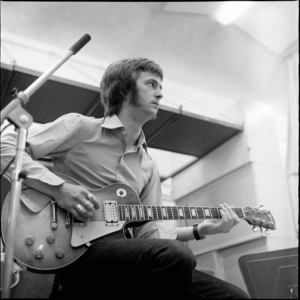 Arguably the most difficult track to master from the Beano album, 'Hideaway' presents the player with some tricky techniques and timing challenges. The first one to be aware of is right at the start, the second time we play the main riff. If we listen very closely to the record, we can hear that Eric does not play the second note. Instead, it is 'implied', and our brain fills in the gap. This subtle point goes a long way to capturing the feel of the track as it was recorded.
Arguably the most difficult track to master from the Beano album, 'Hideaway' presents the player with some tricky techniques and timing challenges. The first one to be aware of is right at the start, the second time we play the main riff. If we listen very closely to the record, we can hear that Eric does not play the second note. Instead, it is 'implied', and our brain fills in the gap. This subtle point goes a long way to capturing the feel of the track as it was recorded.
Another thing to be very careful with is the string bending. It is important to make sure we end our bends on the correct notes. Listen carefully to where those notes should end and get them as close as you can. Also be aware that you need to kill them stone dead and cleanly. Do not leave them hanging on.
The hammer-ons in the opening riffs, played in the ninth position (i.e. with the first finger at the ninth fret) can be played with either the second or third finger. Experiment with both, and play it the way that works best for you. I tend to chop and change, sometimes using my second, sometimes my third. And be sure to get the repeated hammer-ons in the third phrase nicely in time. Listen very carefully to the underlying beat as you are playing.
For the closing part of this section, the riff moves down to the open strings, more in the style of the original Freddie King version. For the part where it comes out of the riff (after the slide-up on the E string which is followed by the three repeated hammer-ons) those three notes are usually seen played on the open B and G (2nd fret) strings, but I find I can control the tone and the damping much better if I play it all on the G string, at the 2nd and 4th frets. Give it a try and see what you think.
Trills play a big part in Hideaway, and next we come to the first of them. It's on the G string, and we trill on the first fret. You can use either your first or second finger. I usually use my second, because it has more strength and I do the trill much more effectively.
After a couple more notes, you then have the rapid slide on the G string, from the 3rd to the 2nd fret then the open G string. Listen to the record to check the sound you are aiming to achieve, then work on it.